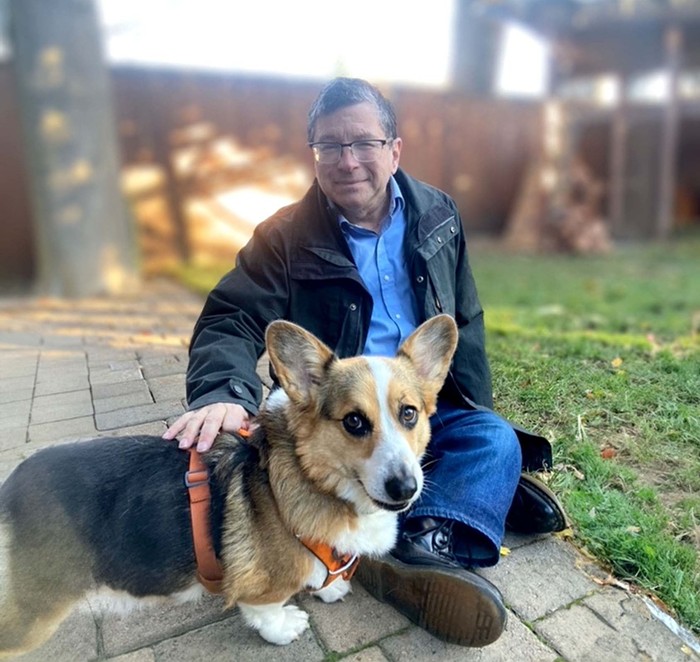According to reproductive rights advocates, Oregon is the “gold standard” for abortion access in the US. That’s in no small part because—unlike every other state in the nation—Oregon does not have any state laws that restrict a woman’s right to get an abortion. While numerous other states force women to look at an ultrasound of their fetus or listen to false information about fetal development or cancer risks before getting an abortion, Oregon has guaranteed women affordable, accessible, and judgment-free abortion procedures since 1969. Since then, the only abortion-related laws passed by the Oregon legislature have made the procedure more accessible to women, like the groundbreaking Reproductive Health Equity Act (RHEA) signed by Governor Kate Brown last August, which requires all health insurers to cover abortions without charging patients a copay.
But this year, an unusually effective anti-abortion campaign led by a group called Oregon Life United wants to upend Oregon’s restriction-free record. Their weapon of choice is a pending ballot measure currently known as Initiative Petition 1 (IP 1) that would keep public dollars from funding any insurance plan that covers abortion—effectively forcing Oregon’s public insurance plans to drop abortion coverage. It mimics a national law that forbids federal funds from paying for abortion procedures, despite the fact that abortion has been legal in the United States since 1973. In addition to removing abortion coverage from all public employees’ insurance plans, IP 1 would also cut coverage to low-income women on the state’s Medicaid program, the Oregon Health Plan (OHP). All told, the measure would impact more than 500,000 women, and roll back the protections guaranteed by RHEA.
This is hardly the first time an anti-abortion campaign has attempted to place statewide restrictions on the procedure—but it’s the first time in over a decade that a measure to restrict abortion has a real chance at getting on a statewide ballot. While IP 1 still needs final approval from the Secretary of State’s office before it’s guaranteed a spot on the November 6 ballot, the fact it’s even made it this far in the process has women’s health advocates on edge. If IP 1 is approved, it will be the first time in decades that a measure to limit abortion funding has reached a statewide ballot.
“We’re taking the threat very seriously,” says Grayson Dempsey, the executive director of NARAL Pro-Choice Oregon. “It’s no longer purely hypothetical.”
The IP 1 campaign comes during an unusually polarized moment in state and national politics, when the idea of the newly conservative US Supreme Court repealing the federal abortion law isn’t out of the question and a movement to reverse Oregon’s sanctuary protections for immigrants has qualified for the November ballot. Against this backdrop, what does IP 1’s unpredicted momentum say about Oregon’s future as a sanctuary for reproductive rights?
“We’re taking the threat very seriously. It’s no longer purely hypothetical.”—Grayson Dempsey, executive director of NARAL Pro-Choice Oregon
Ironically, the answer may lie in Oregon’s unrivaled abortion protection laws. Jeff Jimerson, director of Oregon Life United, says his campaign gained momentum after RHEA’s passage. The law made national headlines for creating what women’s health advocates called the country’s “most progressive reproductive health policy”—and what conservatives called “free abortion for all.” In an email to the Mercury, Jimerson says he witnessed a “notable surge of interest” in the anti-abortion community to push back on Oregon’s law, which, over two years, will direct $500,000 for insurers to cover abortion and other reproductive health costs.
Jimerson says his campaign had more than 10,000 volunteers gathering signatures across the state, with many churches recruiting supporters from their congregations.
“This may be a reaction to all the hard work [Oregon] put into the reproductive equity act,” says Elizabeth Nash, a senior state issues manager for the Guttmacher Institute, a reproductive health research organization. Nash says that while IP 1’s progress in Oregon is certainly “unusual,” it’s common to see opposition groups like Oregon Life United rise up after a major reproductive rights win. Nash has seen a number of other states, like West Virginia, consider similar legislation that would ban publicly funded abortions.
“These things come in waves,” she says.
But in Oregon, these reactionary anti-abortion measures usually fizzle out before getting to the ballot. In recent years, another anti-abortion group, Oregon Right to Life (which is, confusingly, unrelated to Oregon Life United), Oregon Life United has campaigned to get similar initiatives on the state ballot. Each time, legal teams representing Oregon’s abortion advocates have found ways to disqualify those initiatives, usually by challenging misleading wording within the ballot text.
According to Grayson Dempsey, the executive director of NARAL Pro-Choice Oregon, 2018 was different.
“In the past, we’ve just held [ballots] up in the courts,” says Dempsey. “This time, they were well-prepared. They cleaned up the language-related problems and made it difficult for us to challenge it.”
Dempsey is a member of Oregon’s No Cuts to Care campaign against IP 1, which includes representatives from Planned Parenthood and the ACLU of Oregon and has the support of Governor Brown. Dempsey says No Cuts to Care did file a complaint with the Secretary of State’s office, alleging that IP 1 organizers broke campaign rules by paying at least two signature gatherers. But the campaign has yet to get a response from the state office.
The state has until August 5 to verify the 139,286 signatures that Oregon Life United submitted to qualify IP 1 for the November ballot. Both Jimerson and Dempsey think that process could wrap up as soon as Friday, July 27; if the state decides the majority of signatures are legitimate, the anti-abortion measure will be on the November ballot.
Even then, odds aren’t in Oregon Life United’s favor. Oregon voters have never passed an anti-abortion measure. The most recent attempt to restrict abortion access came in 2006, with a measure that would require doctors to notify a parent before performing an abortion on girls between the ages of 15 and 18. It lost with 45 percent of the vote. A measure that defunds abortion, like IP 1, hasn’t been on the ballot since 1986.
Despite these odds, Dempsey says the unexpected success of the IP 1 campaign thus far is an important reminder to Oregonians who may believe their rights to safe and accessible abortions are secure.
“It’s important to look beyond the Portland bubble and realize that many Oregonians don’t agree on abortion,” says Dempsey. “We can never sit back. We must keep pushing forward.”

















